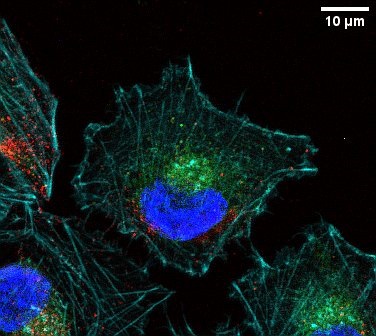Breakthrough in Non-Invasive Brain Imaging: Light Beams Through Human Head

In a groundbreaking study, researchers at the University of Glasgow have successfully beamed light through a human head for the first time, potentially revolutionizing the field of brain imaging. This innovative technique, recently published in the journal *Neurophotonics* on June 24, 2025, marks a significant advancement in non-invasive methods for examining brain structures, presenting an alternative to conventional MRI scans that are often cumbersome and require substantial infrastructure.
The study led by Dr. Emily Carter, a neuroscientist at the University of Glasgow, demonstrated that near-infrared lasers can penetrate human tissue, including brain matter, without causing harm. Dr. Carter stated, "Our findings indicate that light can traverse the brain in a controlled manner, following preferred pathways rather than scattering randomly. This characteristic could enhance the accuracy of brain imaging significantly."
Currently, MRI machines dominate the landscape of brain imaging, providing detailed images but lacking portability. The newly developed technique allows for a much smaller and more mobile imaging device, which could drastically improve accessibility in various medical settings. According to a report from the World Health Organization (WHO) published in 2023, approximately 60% of the world’s population lacks access to adequate imaging technology, making advancements like this essential for global health.
Despite the promising results, the research is in its early stages, having only been effective on one of eight participants during testing. The successful case involved a male subject with light skin and no hair, raising questions about the technique's applicability across diverse demographics. Dr. Michael Wong, a bioengineering expert at Stanford University, noted, "While this technique shows promise, we must consider varying skin types and hair density in future studies to ensure reliable results across populations."
The implications of this research extend beyond mere imaging. Dr. Laura Bennett, a neurologist at Johns Hopkins University, highlighted the potential for early detection of neurological conditions. "If this technology can be refined, it could lead to earlier diagnosis of diseases such as Alzheimer’s and Parkinson’s, which are notoriously difficult to identify in their initial stages," she explained. The potential for portable imaging devices could also aid in trauma situations where traditional MRI facilities are not readily available.
As researchers continue to refine the technique, they face several challenges, including ensuring the consistency of light transmission through various tissue types. Future studies will need to address these issues while expanding the participant pool to better understand how the technology can be adapted for broader clinical use.
In conclusion, the ability to beam light through the human head opens new avenues for brain imaging, with the potential to enhance diagnostic capabilities significantly and improve patient care in a variety of settings. As researchers push forward with this innovative method, the medical community remains optimistic about its future applications and the profound impact it could have on the field of neurology. The next steps will involve rigorous testing and collaboration across disciplines to ensure the technology meets the diverse needs of patients worldwide.
Advertisement
Tags
Advertisement





